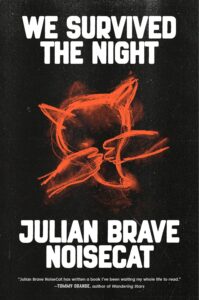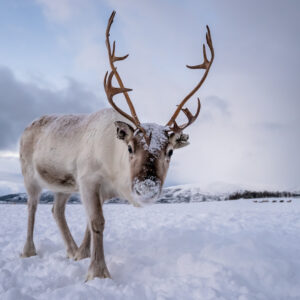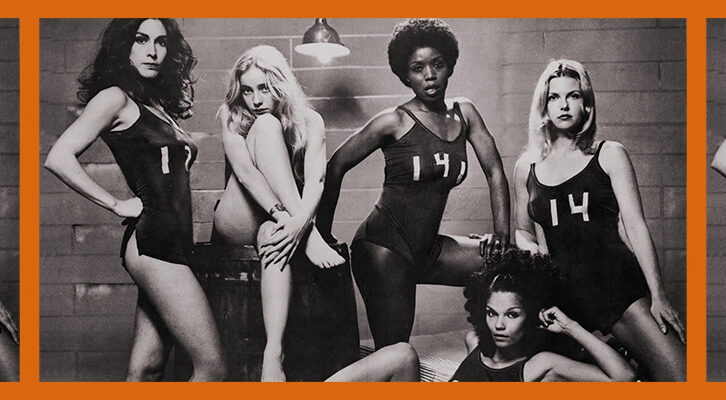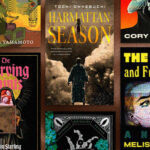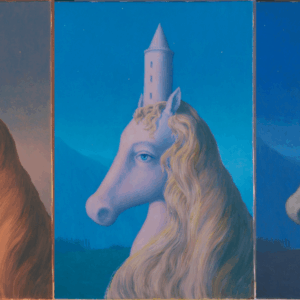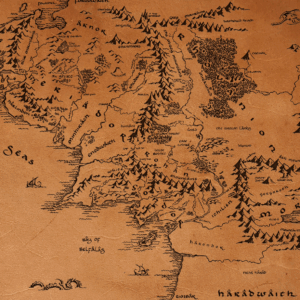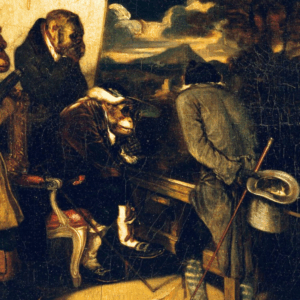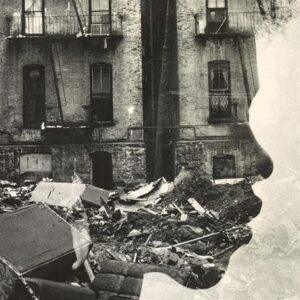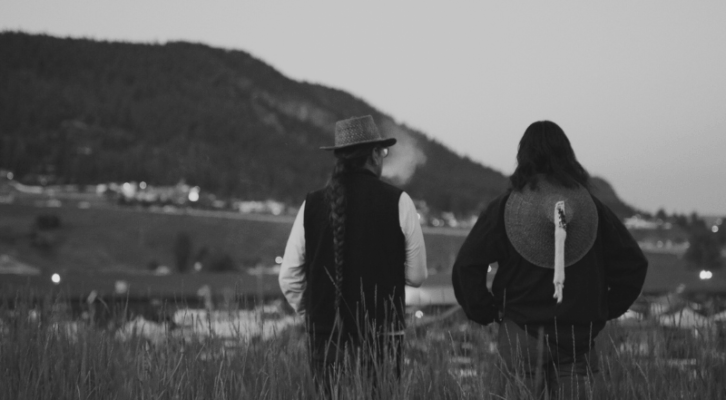
Julian Brave NoiseCat on How Directing a Documentary Shaped His Memoir
“Nonfiction is, at its core, about how one chooses to live and observe life.”
This first appeared in Lit Hub’s Craft of Writing newsletter—sign up here.
A couple months after I signed the contract for my first book, We Survived the Night, I took a call from my friend and colleague Emily Kassie. Ground-penetrating radar had just detected what appeared to be over 200 child-sized graves on the campus of an Indian residential school in Kamloops, British Columbia. Emily wanted to know if I’d be open to codirecting a documentary with her about the topic.
At first, I was hesitant. I had no clue how to start the book I had just received an advance to write. And I had never made a film of any length in my life, not even a TikTok. Emily didn’t know this, but my kyé7e (grandmother) was sent to the Kamloops Indian Residential School, where she finished high school and studied nursing. She has said little about what she endured there and at the other school she was sent to—St. Joseph’s Mission, where my father was born and found minutes later in a trash incinerator by the nightwatchman who told the local paper his cries sounded like a cat. (Noise-Cat, get it?)
After considering Emily’s offer to codirect for two tortuous weeks, I called her back and told her I was open to the idea. It was then Emily told me that she had identified a second First Nation leading an investigation, this one at St. Joseph’s Mission—yes, that St. Joseph’s Mission. As you might imagine, there was a long pause on my end of the line. Because I could not believe Emily had just uttered the name of the Indian school—one of 139 across Canada—where my father’s life began and nearly ended.
From that moment on, I wrestled with a question that had my head, my heart, and my guts in a half nelson: How far was I willing to follow this big, painful story—one that gets at the heart of what happened to Native people across Canada and the United States? What it means to have survived centuries of efforts to eradicate us as people? And what it means to be Indigenous today? How many of my family’s secrets did I really want to know and potentially reveal? There was only one way to find out: live the story.
Because here’s the thing. When you write a scene, you don’t have to have been present at that scene. With a little research, reportage, and imagination, a writer can recreate something they were not present for, maybe even in a place they’ve never been with people they’ve never met. Writers do not have to live our stories.
Not so in documentary, or at least not so in cinema verité, the observational filmmaking style we used in Sugarcane. In cinema verité, the filmmaker witnesses and records events unfolding in real-time, then crafts a film from that footage. Emily and our director of photography Chris LaMarca shot for over 1,000 hours. Emily, Chris, and I spent more than 100 days on the ground in Williams Lake and in the surrounding Secwépemc communities—my people’s homelands—living alongside our subjects, including my own family on the Canim Lake Indian Reserve. In other words, I started to live a much more Indigenous life than I had before.
How far was I willing to follow this big, painful story—one that gets at the heart of what happened to Native people across Canada and the United States?
Because I did not grow up in Canim Lake. In fact, I grew up over 1,000 miles and a country away in Oakland, California. But because I was making Sugarcane, I spent a huge chunk of the last four years in my community with my family. I even moved in with my dad, a man who left my mom and me when I was just six years old. We lived together under the same roof in a little Navy Town in Washington State for the better part of two years, cooking each other breakfast, hanging out, making art, smoking weed, and telling stories.
Nonfiction is, at its core, about how one chooses to live and observe life. After living far away on the East Coast in New York and Washington, D.C., after attaining degrees from two of the oldest most imperial educational institutions in the world—Columbia University and the University of Oxford (a Master’s in “Global and Imperial History,” no less)—my documentary Sugarcane and then my book We Survived the Night brought me home to my family and our people. It led me to live a more Indian life.
A life where I used our Secwépemc language more in conversation and on the page—a good thing, because the only remaining fluent speakers on our reserve are my kyé7e and her sister, both in their mid-80s. A life where we fish salmon out of a deadly rushing river all night long just so we can give all our fish away to our loved ones the next day. A life where we are, at times, called upon to carry the coffins of family members to the frozen ground of our community cemetery to shovel dirt, tears, and stories atop their graves. A spiritual life that led me to take up new ceremonial responsibilities in my nation. That’s why, every summer solstice for the last four years, I have sat out in the woods near the Secwépemc community of Esk’et with no food and no water, praying, fasting, seeking spirit power, and asking for protection for my relatives. So that the hard and painful stories I have been called to tell fall easy on them.
When I finish my prayers with the words “xwexwéyt te kwseltkten (all my relations)!” I think about how wonderful and complicated it is to be related. The love and pain that comes from being so intertwined with your kith and kin, many of whom are suffering because of all the awful things that were done to Indian people in all those attempts to make us die and disappear. Because that’s what it means to be Indian, to love, and to be related.
That’s why about a year and a half into directing a documentary about the system that nearly wiped our Indian way of life off the face of this earth, I decided to write We Survived the Night in the style, structure, and tradition of a Coyote Story, a narrative form from my peoples’ culture that tells the story of the creation of the world and the way things are through the adventures and misadventures of our trickster ancestor. Coyote who died and resurrected so many times the Indians lost count. Not a messiah, but a survivor, like my dad, my kyé7e, myself, and so many other Indians I know and am related to.
The Indian way of life was very nearly wiped out by colonization and schools like St. Joseph’s Mission. But it is a good and beautiful way of life. It endures through each and every Indians’ words, actions, and lives. The way we choose to see and experience truth. The stories we live, the stories we tell, and how we tell them.
________________________________________________
We Survived the Night by Julian Brave NoiseCat is available via Knopf.
Julian Brave NoiseCat
Julian Brave NoiseCat is a writer, Oscar-nominated filmmaker, champion powwow dancer, and student of Salish art and history. His writing has appeared in dozens of publications, including The New York Times, The Washington Post, and The New Yorker. NoiseCat has been recognized with numerous awards including the 2022 American Mosaic Journalism Prize and many National Native Media Awards. He was a finalist for the Livingston Award and multiple Canadian National Magazine Awards, and was named to the TIME100 Next list in 2021. His first documentary, Sugarcane, was nominated for an Academy Award for Best Documentary. Directed alongside Emily Kassie, Sugarcane premiered at the 2024 Sundance Film Festival, where NoiseCat and Kassie won the Directing Award in U.S. Documentary. NoiseCat is a proud member of the Canim Lake Band Tsq̓éscen̓ and descendant of the Líl̓wat Nation of Mount Currie. We Survived the Night is his first book.









